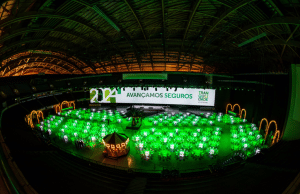Incentive trips are like Primičeva Julija. According to chroniclers of her time, she was a wealthy, good looking yet presumptuous wench, desired by many, yet only a few ever managed to bask in the sun of her attention. They wanted her for her money, which she had to spend, yet where there’s money there’s envy. Whoever found himself in her favour, had to consider the pride, boredom, new and new demands… The ultimate goal was hear satisfaction and the repayment for all the sweet troubles.
The same is true for incentive programs, where we mostly highlight (most of us coming from the supply side of the market) incentive or promotional (and similar) trips. Why do we want them so badly? Because they’re not free. Because we don’t need to sponsor them since their aim is profit and benefits for all those involved. Incentive trips are the opposite of mass tourism and are therefore growingly financially attractive. The participants need to be well taken care of down to the last detail, even though they are not paying for the trip themselves (pecunia non olet, event the old Latins knew that). Their satisfaction is not only repaid to the sponsor of the trip, but nonetheless also to the destination. In what way is a different question hidden within the character of “VIP” guests. Perhaps new business partners can be gained; some participants might return with their family members, friends etc.
Incentive trips are not merely a marketing tool. They are a complex net of relationships which require a lot of strategic communication done by the management – actually two managements: first the management of the firm paying for the trip and then also the organizers of the trip. Here a number of questions arise, from purely financial ones (how high can we drive the price before it’s too much and the clients decide to take their employees to Turkey?), to ethical (is it even moral to pay a “wine and dine” trip to a certain segment of people, especially during the times of slow recovery from the claws of the recession or if the company or organization is receiving governmental financial aid as way the infamous case of American Insurance Group in September 2008). And finally: there is no such thing as a free lunch. The participants of incentive trips will get their bill sooner or later.
In the world the conditions in the area of incentives started settling last fall, which means the summer stopped the decline of this important activity. One of the instruments of crisis management in this case was the dismantling of incentive packages, which means the incentive offer didn’t automatically include the entire spectrum of services but for example just the plane tickets and accommodation. According to the data of the IRF (Incentive Research Foundation, theirf.org) from last October roughly 45 per cent of companies and organizations would carry the entire costs of incentives, yet almost a third would cover only the plane tickets. The organizers can save some money by not taking the trip abroad and keep it domestic, or the other way around (if it’s cheaper), not use cruises anymore etc. Moreover, the economic crisis inevitably causes new trends which help the sector to survive: shortening the duration of the trip, decreasing the size of the group, reducing the party and gift programmes. You won’t believe it , but most participants would rather take part in a poorly planned incentive trip than stay at home. The least of the changes appear – which seems a bit funny, aren’t food and drink one of the central entertainments on a trip? – in the area of alimentation. According to the IRF survey more than the half of those questioned doesn’t foresee any changes or plans to “slightly” or “appropriately” decrease or increase the meals or their number. More optimism comes from the information that the organizers of incentives will increase their budgets by a third in 2011 and 2012, those who are saving will be a minority. Over 68 per cent thinks the conditions are more favourable this year, next year this percentage will rise to 77. The survey was taken in the USA, yet the trends tend to hit the old continent and us sooner or later.
So, if suppliers and other believers in incentive trips as a sort of Holy Grail of the meetings industry want these so badly despite the organizational strains, what are we to do? As always…some more creativity won’t hurt and also try to offer a drink or two for free. Mostly I think the solution is in finding new market niches. The meetings industry consists of more than just doctors and pharmacists. In the area of technology (mostly information, “green” or energy) there have been many advances in the last few years and with that new, younger human resources are successfully taking the rains into their hands. Did anyone ever think of farmers and food manufacturers? Many of the above mentioned aren’t even aware they can upgrade their business performance – on trips with their business partners or where they could learn something. If a trip like that is well organized and doesn’t scare off the buyer with oversized prices, the spoilt Primičeva Julija becomes a gentle calf we could have eating from our hands.
Well, that brings us back to strategic communicating.
Rok Klančnik













